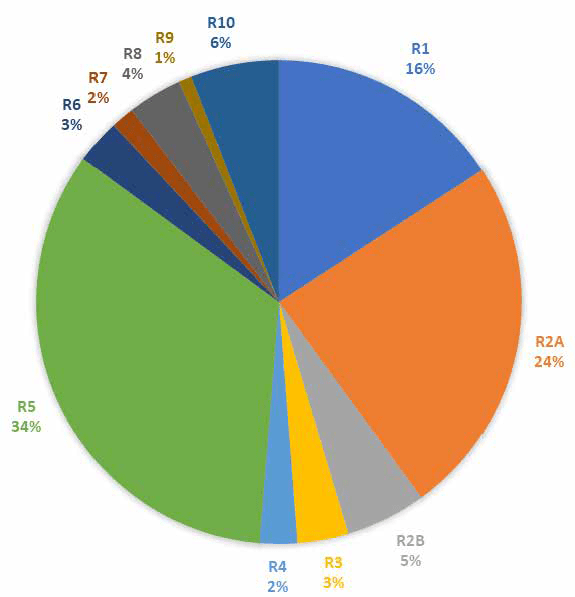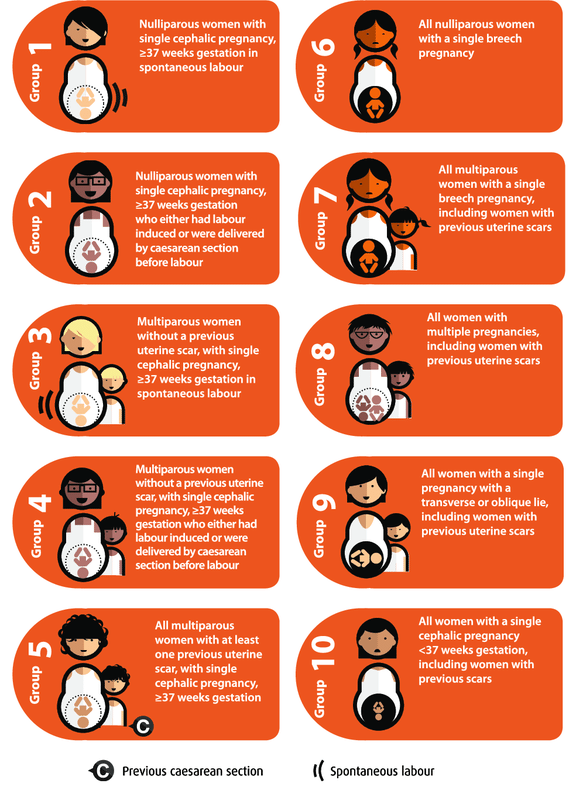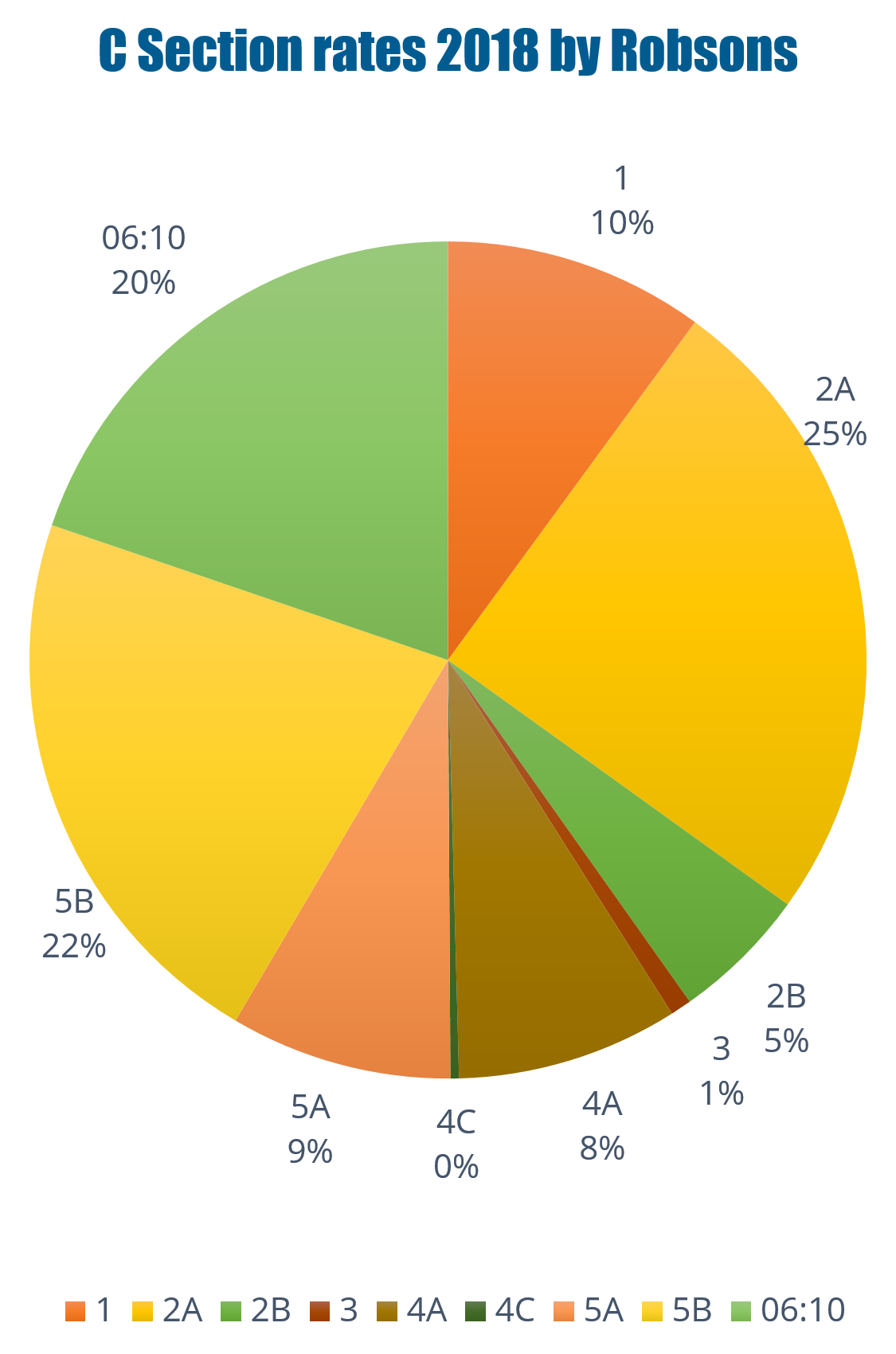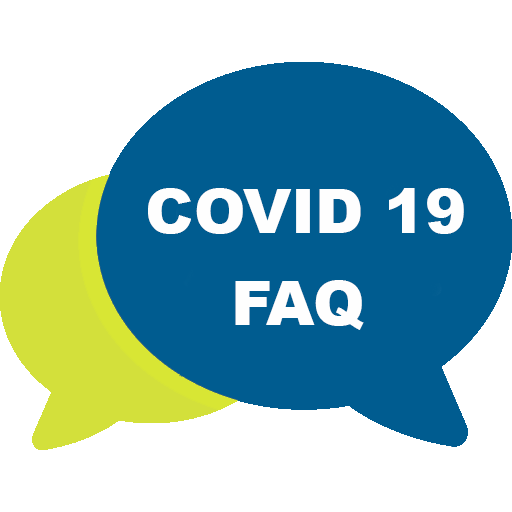C Section Rates
The caesarean section rates have been increasing worldwide. There has been a lot of debate and controversy around the very high section rates in India. At Seethapathy we consciously strive to provide care that reduces section rate and allows for natural child birth. We have a fairly high number of high risk women under our care and so we audit our section data regularly. We also have a large number of women with a prior section coming under our care seeking a vaginal birth.
The Section rates are recommended to be reported by the Robson criteria. (Refer Chart on right). The main focus in on group 1 as these are the women whose obstetric future is likely to be affected by the primary section. The areas that we focus on are
1. To reduce the primary section rate, reduce our Induction and failed induction
2. To allow a Trial of labour after a scar ( TOLAC) to increase the chance of a Vaginal birth after a Cesarean section ( VBAC)

We are happy that we are able to keep the rates low for the women who come in spontaneous labour. If we take all first time mothers who come in spontaneous labour, their chance of a C section is 17% based on our 2018 data analysis. If we need to induce labour, the commonest reason being going beyond dates, medical problems such as diabetes and hypertension, then the chance of a section increases to 43%. Our commitment to reduce the c section rate continues especially in the area of inductions and previous section. We audit our inductions and give ample time for induction to work. The most common reason for a section after induction is if there is failed induction, failure to progress in labour and fetal distress


